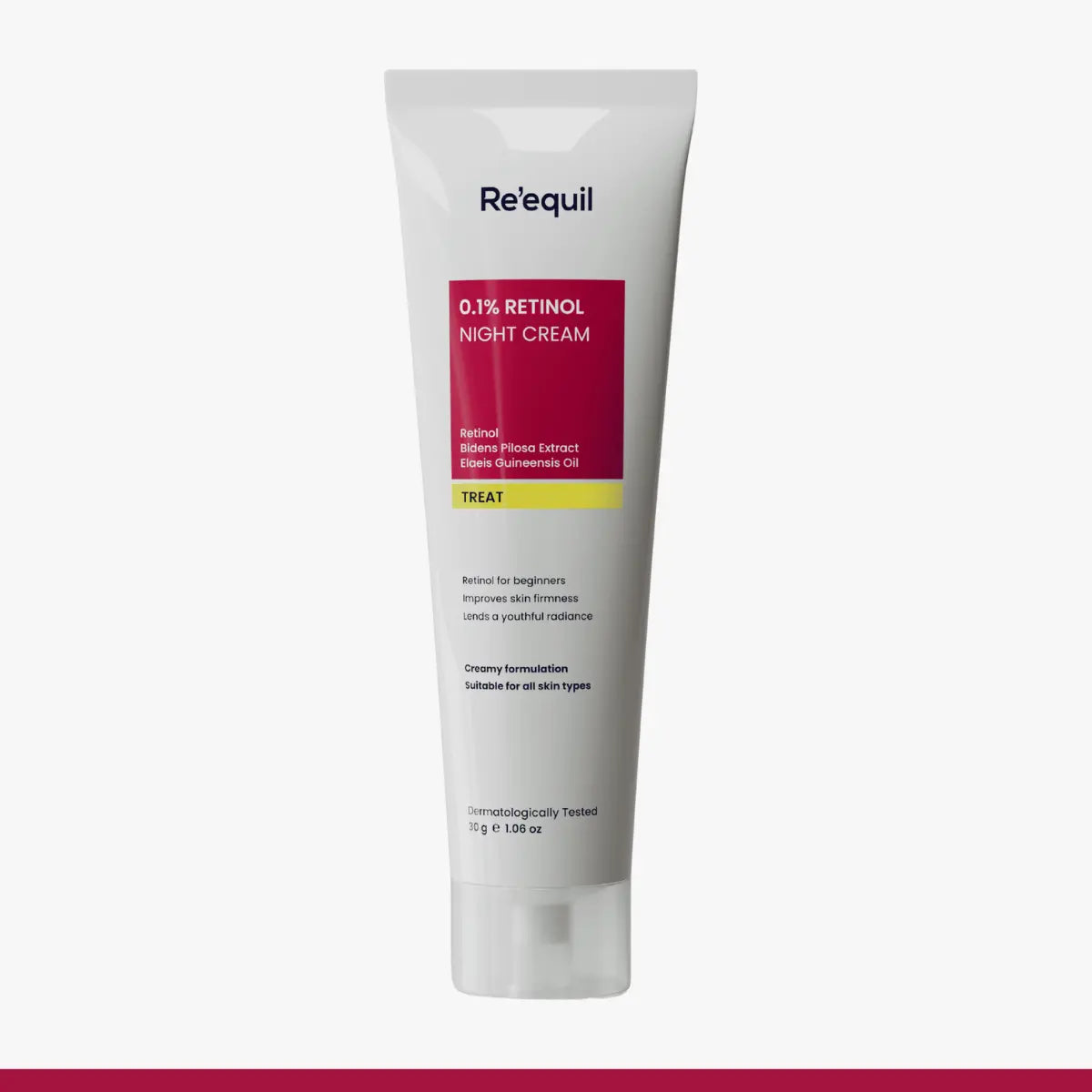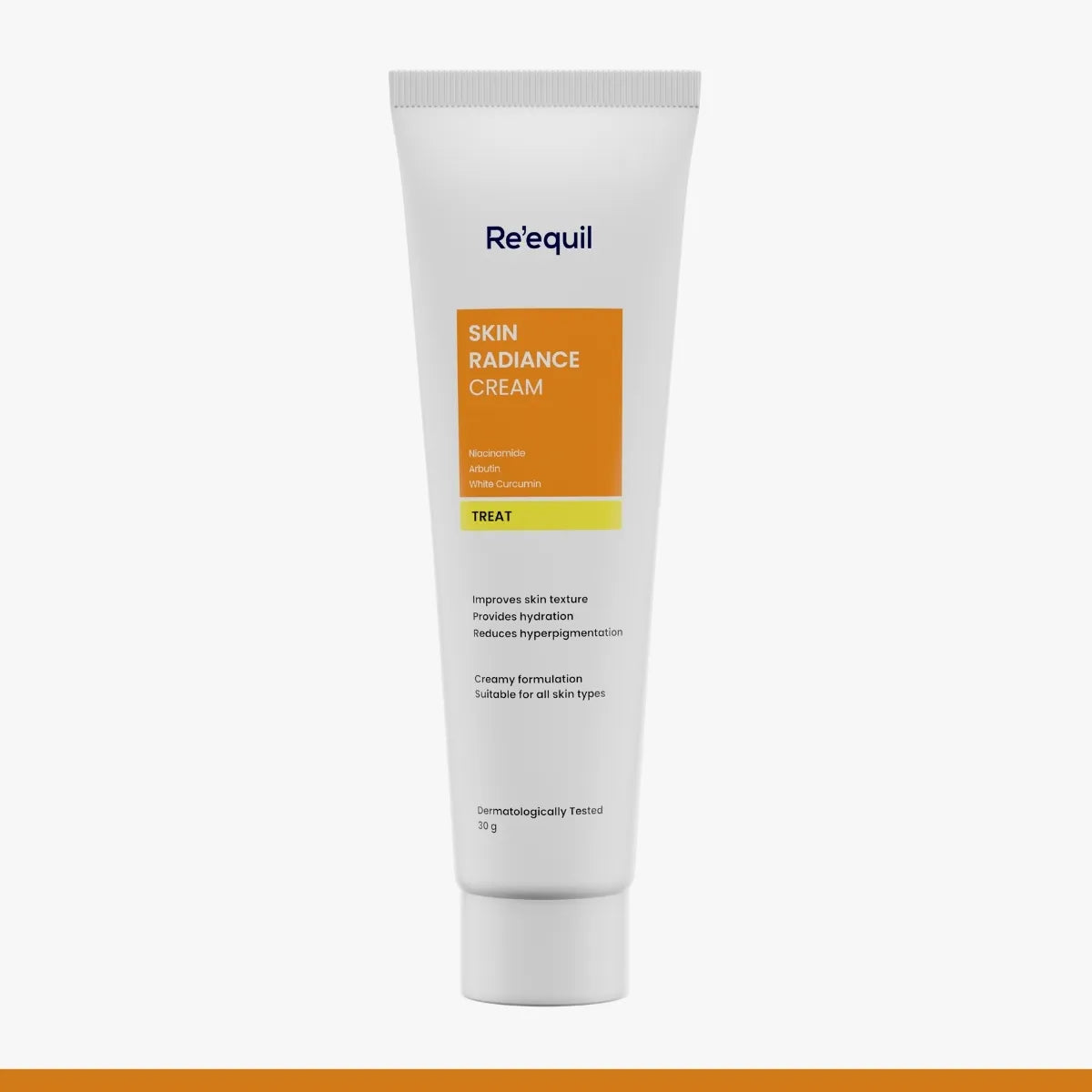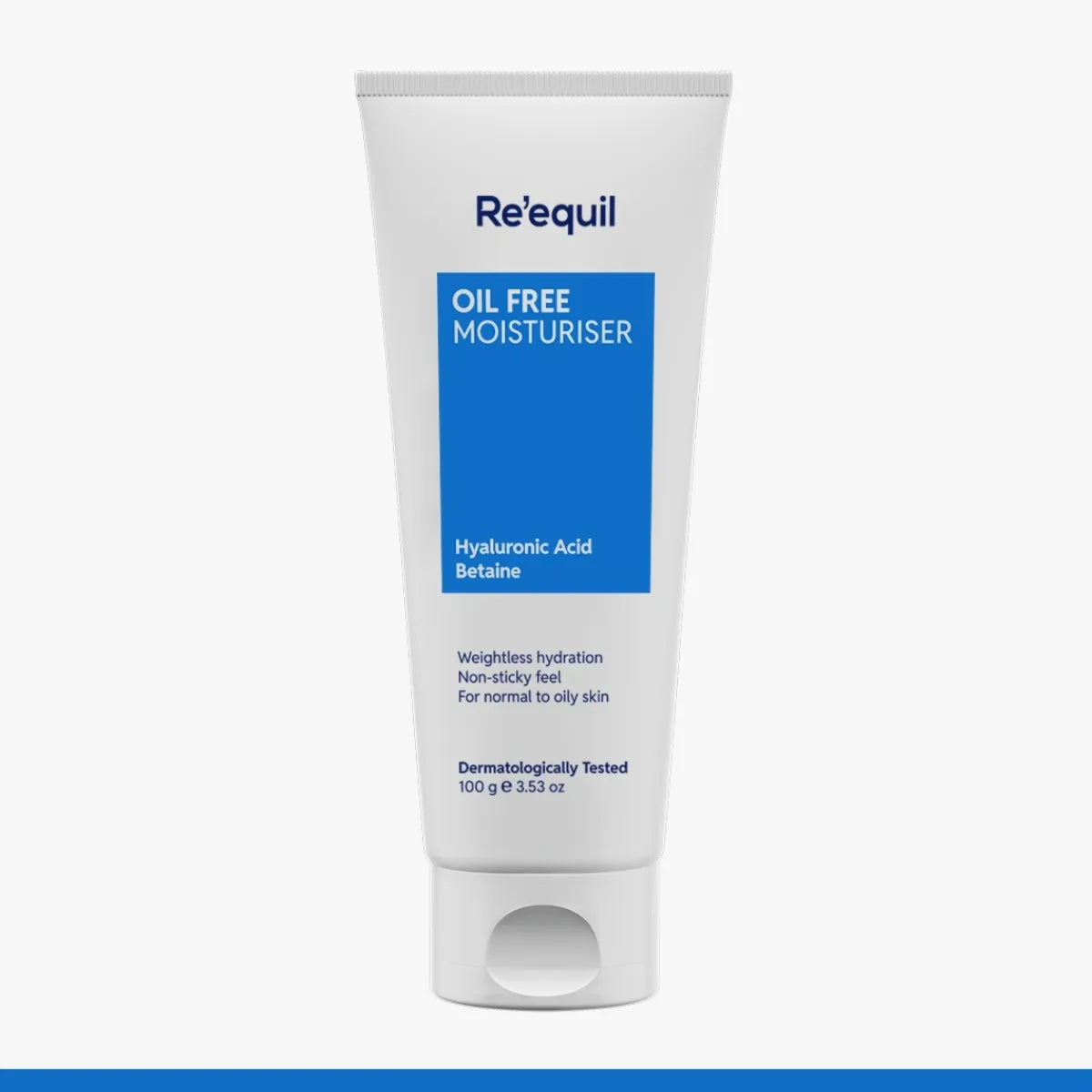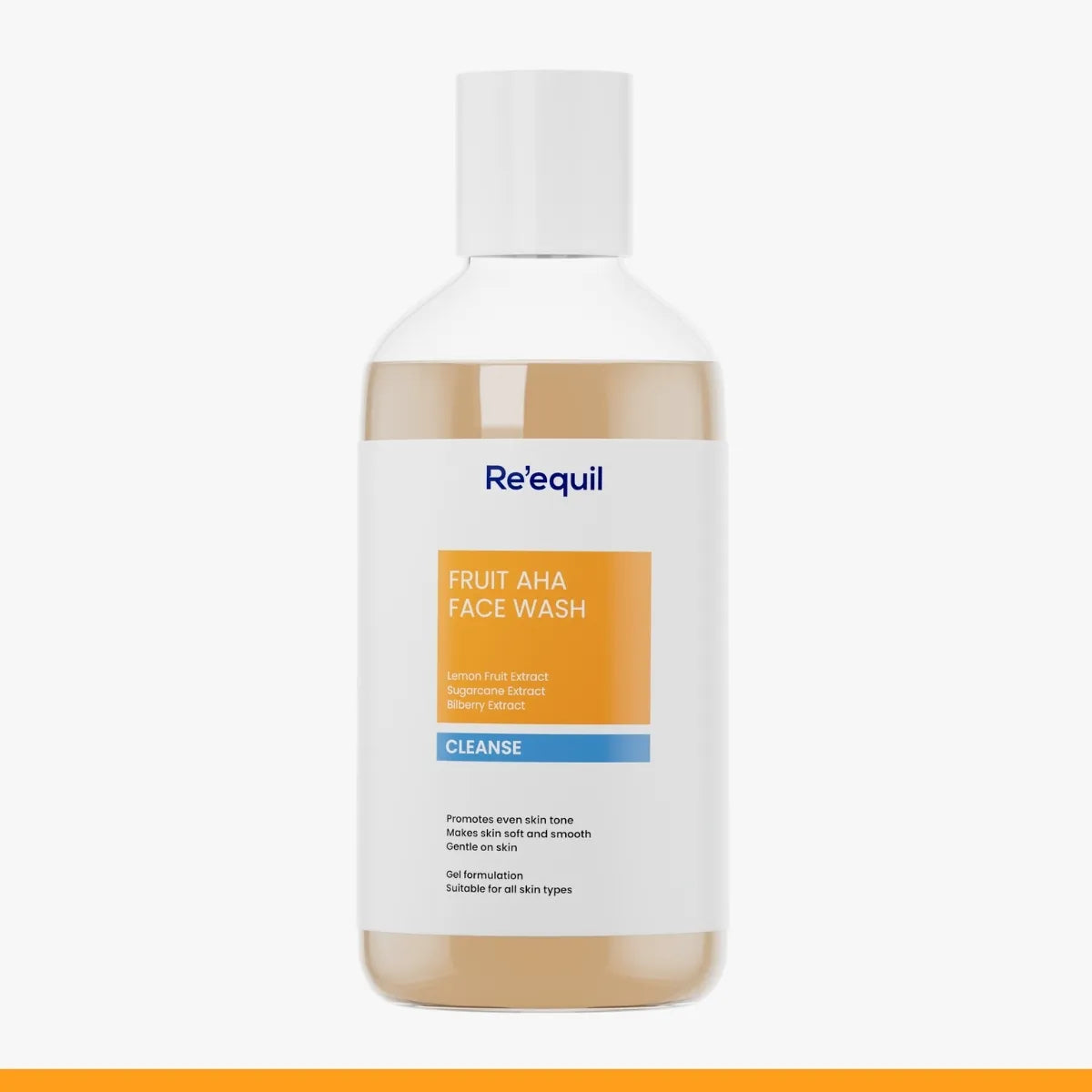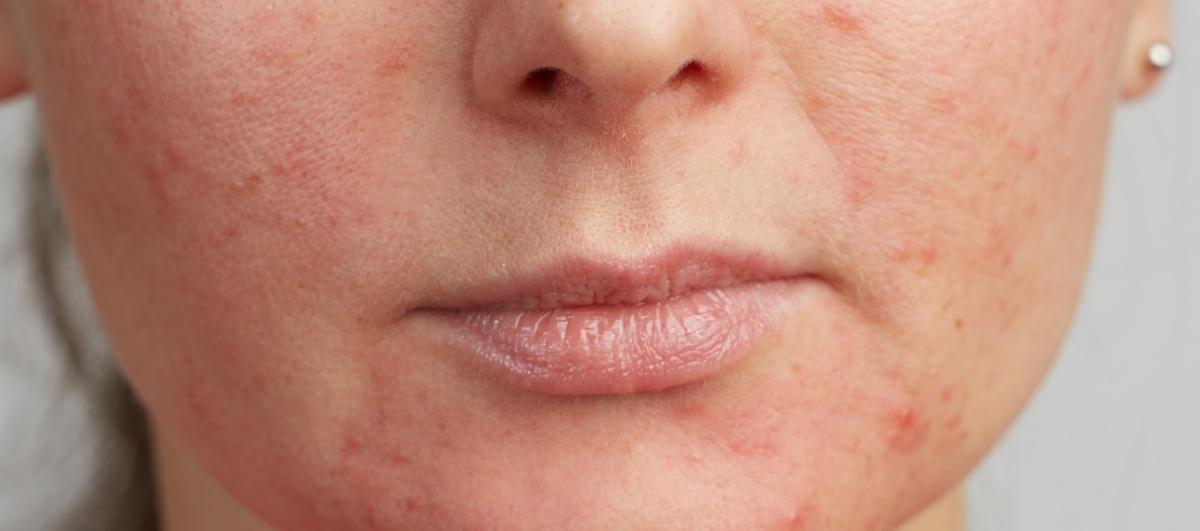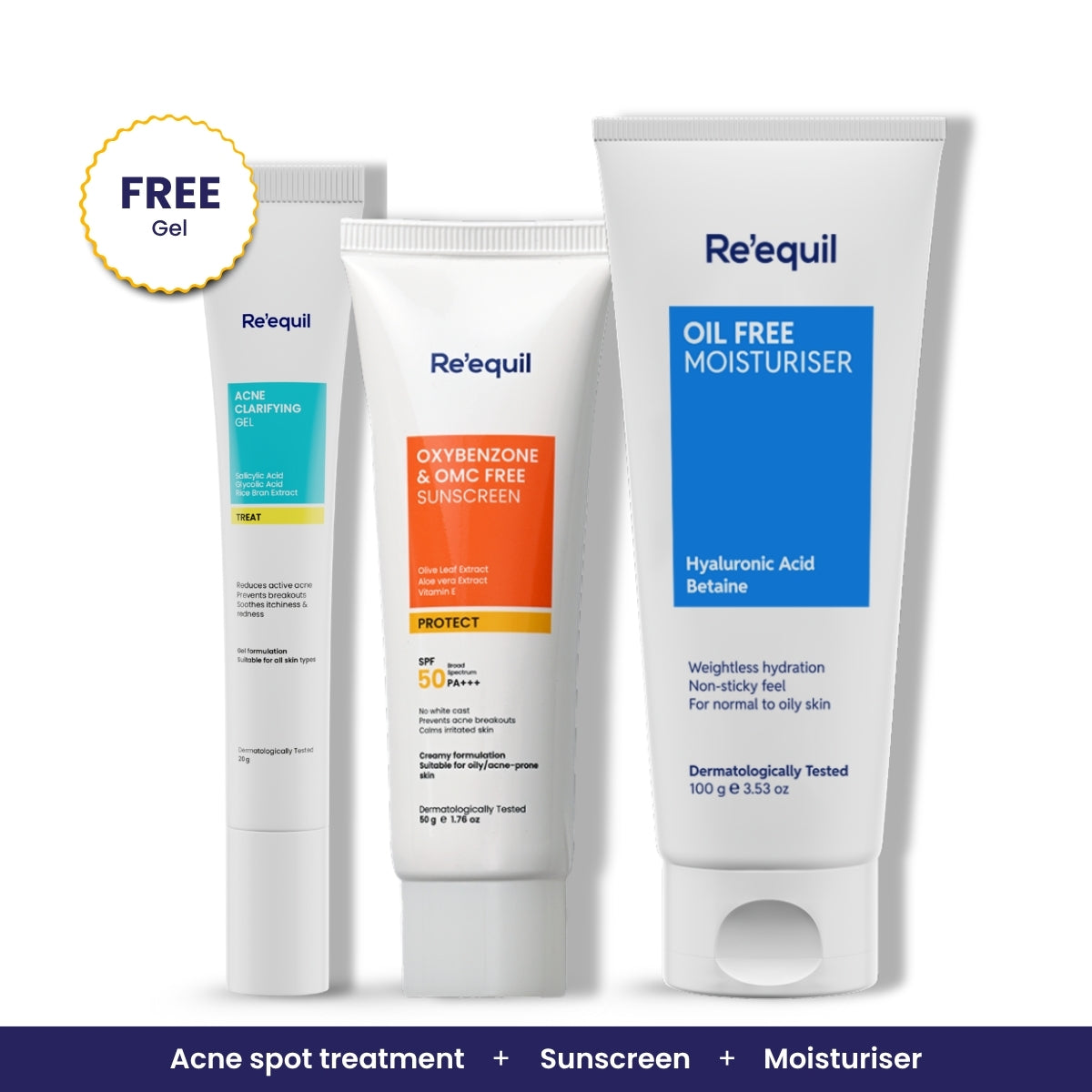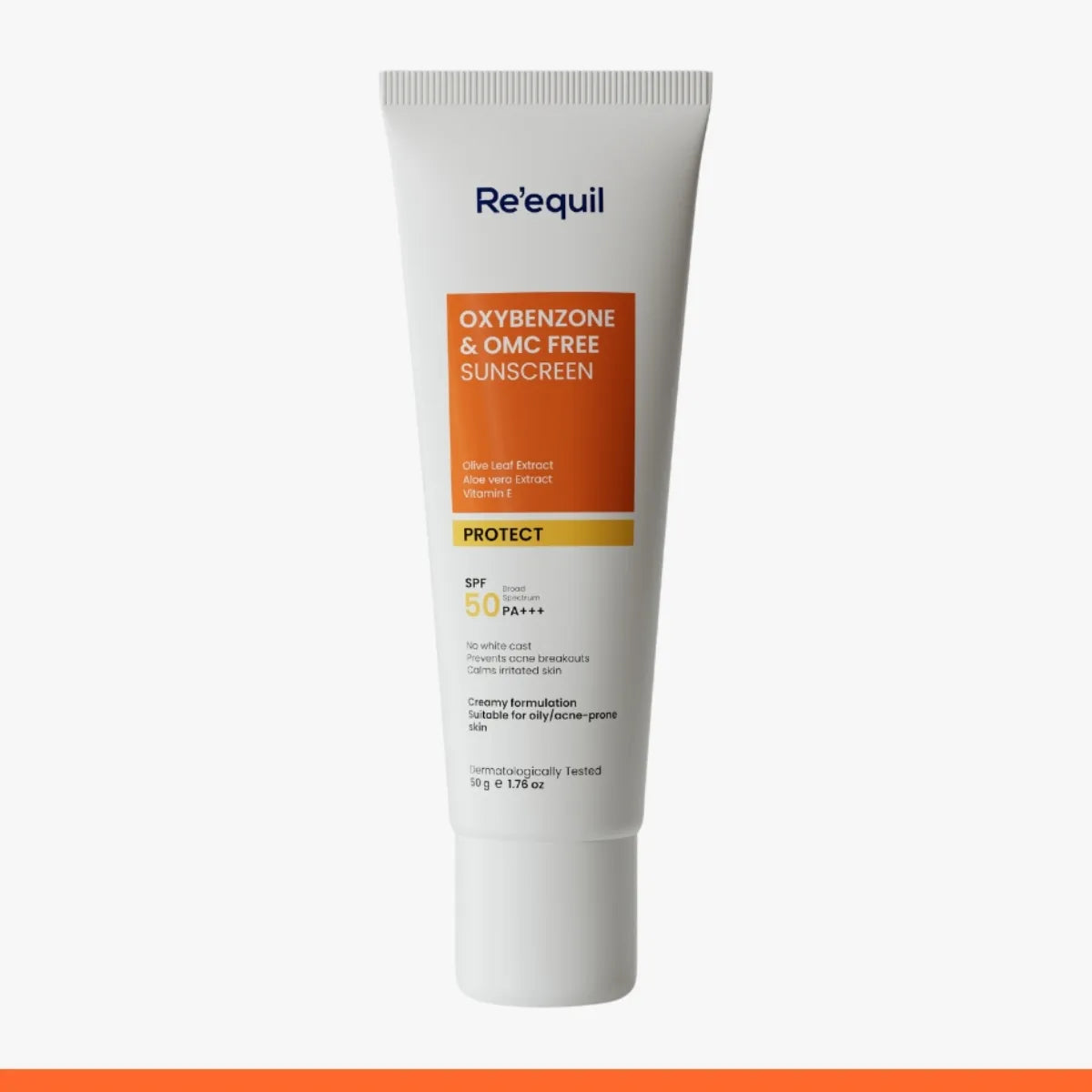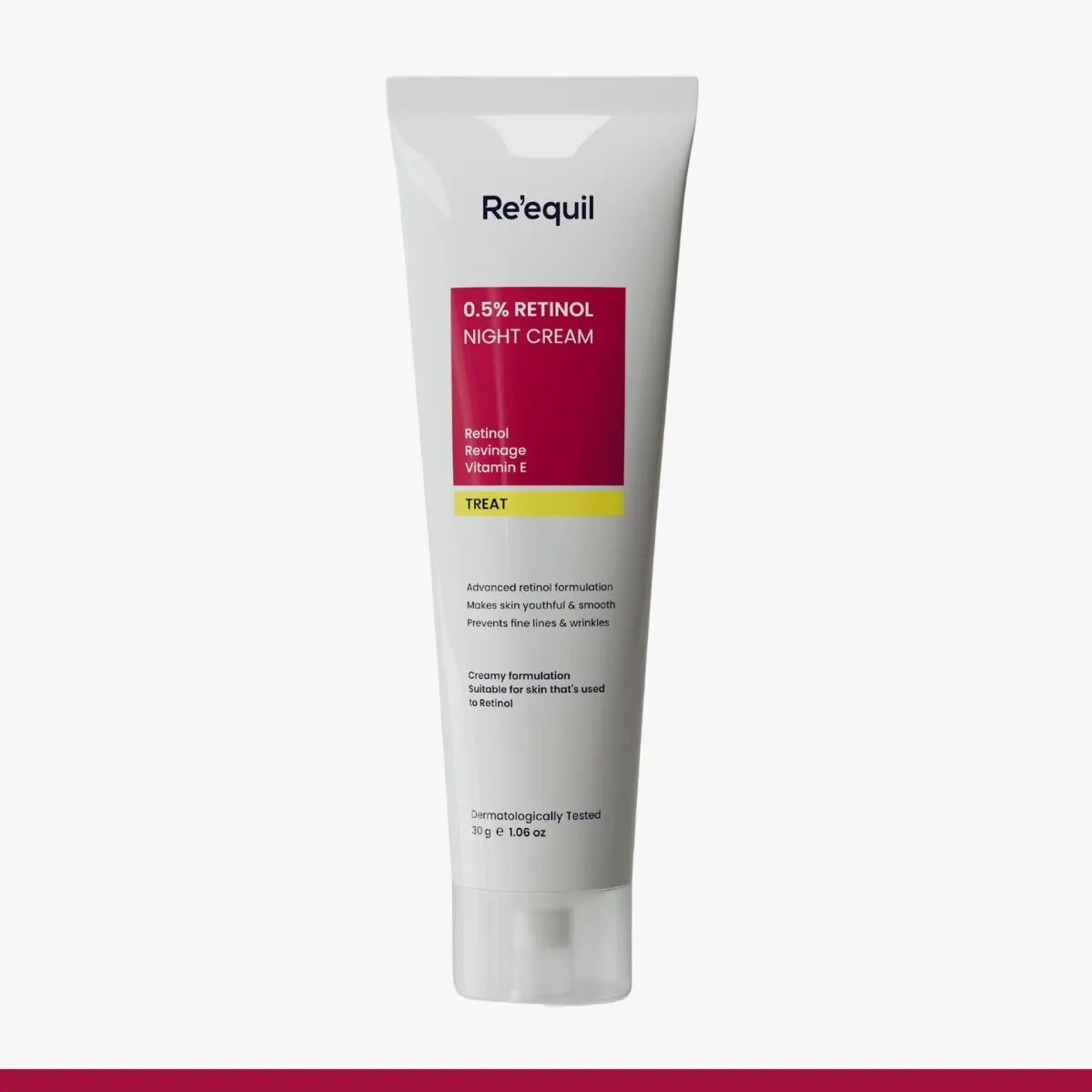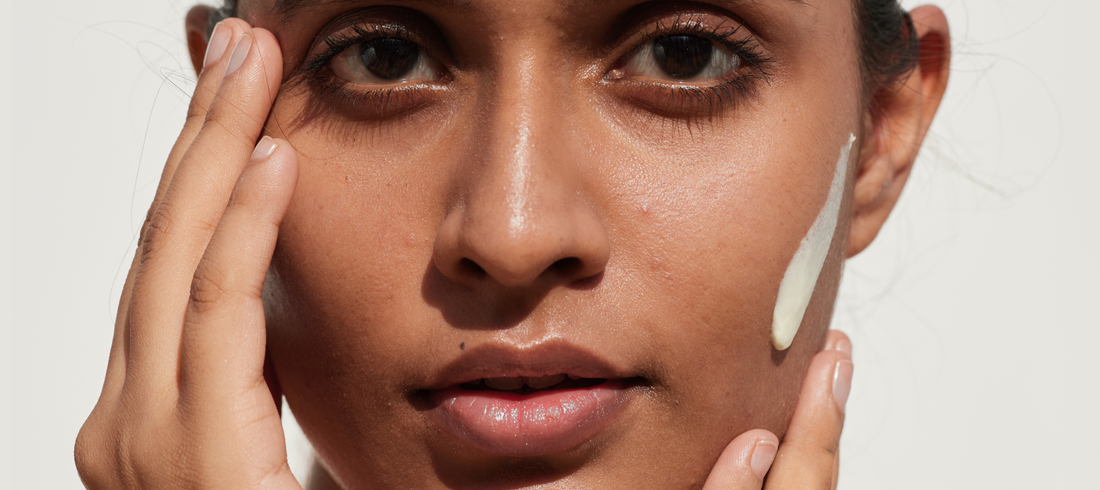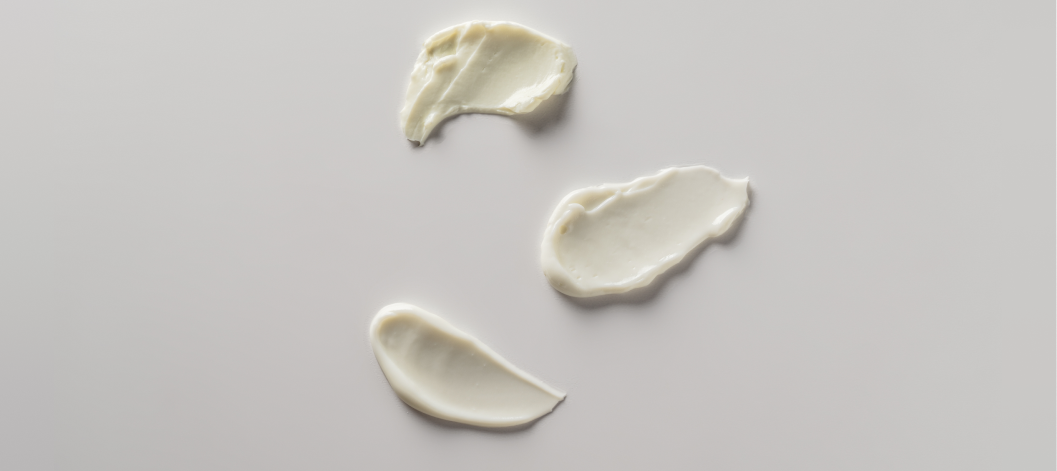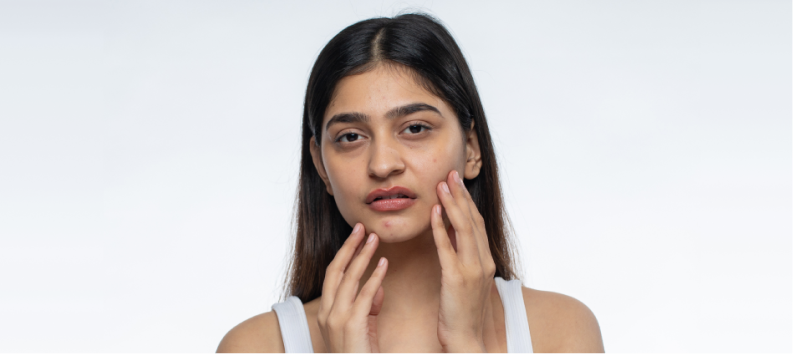It is no secret that as you age, your skin ages too. Despite ageing being a natural process, nobody likes discovering their first facial wrinkle.
Early signs of ageing include fine lines around the mouth/eyes and skin thinning that eventually causes the face to lose its suppleness and glow.
It is also attributed to the deterioration of collagen and elastin proteins, responsible for skin structure, elasticity, and firmness.
The fact remains that one needs to consistently modify their beauty regimen based on the skin's current needs. This is because the skin care products that were effective in your early 20s, may eventually lose their efficacy, as you age.
One element that consistently stands out among the plethora of topical solutions that promise plump, hydrated, collagen-rich, and radiant skin is- Retinol. This go-to skin care product is a derivative of vitamin A and is best suited for a variety of skin treatments, such as preventing acne, lessening wrinkles, undoing UV damage, and constricting pores.
Relation Between Retinol and Skin Purging
Despite being the silver bullet of the skincare world, retinol definitely gets a bad wrap, when it comes to skin purging.
But why does the skin purge upon retinol application? Trust me, it is no rocket science.
Retinol application encourages cell turnover, which means that it forces newer, healthy skin cells to the brim up to the skin's surface to replace old, dead ones.
In this process, it also exposes a number of other substances that have been concealed underneath your skin, that ultimately cause acne breakouts in the form of red painful bumps, skin peeling, and dryness.
Like most medications and cosmetics, retinol's dose and concentration plays a critical role in the extent of these side effects. It can cause-
- Itching skin
- Inflammation
- Redness and Dryness
- Cystic acne and pimples
The silver lining is, it is only a short-term impact! Typically, this purging phase lasts between two to six weeks.
However, it may differ according to skin type and concentration. It is important to keep in mind that retinol does not directly cause acne, it just hastens the formation of acne outbreaks that emerge on their own during the purge phase.
Top 5 ways to reduce skin purging due to Retinol application
If you are experiencing skin purging after applying Retinol to your face — these are some tips you can follow to get past purging — more quickly.
1. Make sure to moisturize well to strengthen the skin barrier
Despite being the star compound, imparting anti-ageing benefits, Retinol is known to deplete the essential moisture content of the skin.
To rebuild the skin barrier, it is crucial to apply a heavy moisturizer, even if you have naturally oily skin.
In addition to using retinol-infused products, moisturizing effectively aids with skin peeling that usually occurs during the initial purge.
To stimulate hydration and deal with some of the evident symptoms of retinol use such as dryness, peeling, and flaking, using a moisturizer containing skin-hydrating ingredients, might help considerably.
Ingredients to look for in your moisturiser are ceramides, hyaluronic acid, mango seed butter, glycerin, etc. These help repair damaged skin, improve skin hydration, and strengthen the skin's protective barrier.
2. Don't forget to apply sunscreen
Retinols function to expedite the life cycle of your skin cells, thereby making the skin more sensitive to the sun. Topical application also increases the skin's susceptibility to UV damage.
To avoid the flip side, always remember to use a broad spectrum, PA++++, oxybenzone-free sunscreen with an SPF of at least 30 or 50.
When outdoors, reapply sunscreen every two hours, don't forget.
Some of the essential natural ingredients that you can look for in a sunscreen that helps soothe skin purging are-
- Physalis Angulata Extract- The inclusion of Physalis Angulata Extract in sunscreen is believed to increase the skin's antioxidant capacity. Also makes the skin healthier by reducing redness, itching, and inflammation.
- Eurol BT- The Olea Europaea (Olive) leaf extract is an ingredient that protects the skin from free-radical damage and imparts anti-acne, anti-aging, moisturising, and anti-inflammatory qualities.
- Tocopheryl Acetate (Vitamin E)- It offers protection against extreme UVB degeneration and safeguards against exposure to the sun and pollution. It is a rich antioxidant that prevents cell damage caused by free radicals.
- Aloe Vera Extract- It offers organic sun protection. It has been shown to be successful in treating inflammation, redness, and sunburns, in addition to promoting skin hydration.
3. Don’t quite just quit
Retinol application is a long-term process and sometimes you might have to reduce the application frequency, to give your skin time to acclimatize.
For starters, reduce your retinol usage to twice or thrice a week.
Sometimes, despite every effort, you still might observe retinol purging, to which your initial response would be to stop using it, at all. Well, DON’T.
Remember it is a temporary side effect and taking a complete break, will initiate the retinization process, right from the scratch.
Any skin type can experience retinol purging, but it is critical to distinguish between a purge and an adverse reaction. Consult a dermatologist if you experience intolerable amounts of redness, peeling, or burning.
4. Avoid using harsh skincare products
When using retinol, reduce the use of any abrasive skincare products, such as certain cleansers, scrubs, and anything gritty.
Do not use exfoliating cleansers containing benzoyl peroxide and salicylic acid. Stick to skin care products with a neutral pH designed for sensitive skin.
Use natural exfoliants and scrubs. Safe ingredients for the same are Coffee, Sugar, Oatmeal etc.
Just keep in mind that your skin is particularly sensitive in this phase, so don't scrub too vigorously.
5. Start with a low Retinol concentration
When it comes to retinol, slow and steady wins the race.
If you are experiencing severe sensitivity, it would also be advisable to start with a smaller dose of retinol and minimize its usage.
Retinol concentration in cosmeceutical products ranges between 0.0015% and 0.3%. Beginners should use retinol products that have a concentration of 0.03 or less.
However, you might want to start even lower if you have extremely sensitive skin.
A retinol product with a low concentration, such as 0.01%, can help with ageing symptoms, minimize large pores and improve the overall appearance of your skin.
Before using it more frequently, try applying it once or twice a week to observe how your skin responds.
In anti-acne therapy, the most typical retinol concentration ranges from 0.01% to 0.4%. It is used topically in the form of a gel or cream.
Different formulations of retinoic acid are such as-
- Gel (0.01%, 0.25%),
- Cream (0.025%, 0.05%, 0.1%),
- New technology microspheres (0.04%, 0.1%),
- Solution (0.05%)
- Emollient (0.05%).
You can begin with 0.1% Retinol Night Cream for Wrinkles & Skin Tightening, enriched with the following natural ingredients-
- Elaeis Guineensis Oil- This oil contains Coenzyme Q10 (CoQ10), a natural antioxidant that prevents skin ageing and dullness. Enriched with antioxidants including vitamin E, it has emollient benefits for the skin due to its non-fragrant plant oil composition that ameliorates the side effects of retinol application.
- Linum Usitatissimum (Linseed)- It is fortified with a considerable amount of omega fatty acids, which improves skin hydration by reducing moisture loss and preventing fine lines and wrinkles.
- Gossypium Herbaceum (Cotton) Seed Oil- This helps to strengthen the skin barrier and soothes red, irritated, dry skin, owing to the considerable amounts of fatty acids particularly known to be effective in treating dry skin. Additionally, it works well as an antioxidant to combat free radicals, which can damage cells and cause premature ageing of the skin.
You may also opt for natural derivatives like Bidens Pilosa Extract which is the newest plant-based retinol alternative, known as Bidens Pilosa (also known as bio retinol), claims to provide anti-oxidant and anti-inflammatory benefits including all of the retinol's major properties, including the reduction of fine lines, wrinkles, slack skin, spots, and pigmentation, without producing peeling or irritation.
Know this before adding Retinol to your skincare routine
- Applying retinol at night and diligently applying sunscreen throughout the day will reduce the risk of sun damage. Sensitivity to sunlight is particularly dangerous because it is invisible. Better not make a cloudy day an excuse to not wear sunscreen.
- Hydrate from the inside out by changing your diet and way of life to incorporate more natural fluids and vegetables. Go for DIY nourishing and firming face masks like lemon yogurt, honey-oatmeal masks, banana masks, Papaya masks, etc. Make sure to calm and hydrate your skin on the outermost layer.
- Consider using a mild cleanser, a moisturizer, and your retinoid, and then top it up with a few taps of your moisturizer with a lighter formulation. It is essential to buffer or sandwich the retinol. It is also crucial to keep track so as to feel motivated throughout the transition period.
Takeaway
Don't let the thought of a retinol purge prevent you from reaping the benefits of this exceptional ingredient. This vitamin A derivative is one of a kind skincare component whose good and bad effects are well-researched and documented.
Its benefits are extensive and unparalleled and undoubtedly progressing toward its usage can be a step forward for your overall skin health.
Retinols decrease oil production, smooth fine lines and wrinkles, promote effective exfoliation, prevent acne, even out discoloration, regulate cell turnover, and much more.
In conclusion, adding retinol to your skincare routine is worthwhile, if you haven’t already done so. Just remember, patience is the key.
